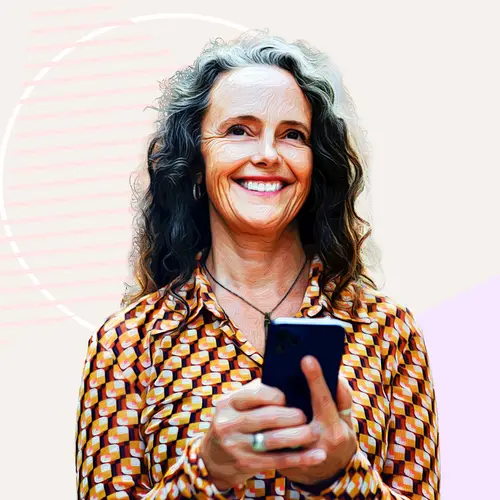Aug. 14, 2000 -- At 77, Jean Cotner is not the oldest person in her yoga class, but she's the most accomplished. Of course, you'd expect that of the teacher. A devout practitioner for over 30 years, her body is the best advertisement for her classes: She appears strong, flexible, and much younger than her years.
"Of all the aids to self-improvement," says Cotner, "mental as well as physical, yoga is surely the most reliable, the safest, and the best." Yoga, she says, works to improve the circulatory, glandular, nervous, and muscle systems. Known as the First Lady of Yoga in Orange County, Calif., where she has taught since 1969, Cotner practices daily and teaches five days a week. Most of her students are much younger than she is, but they are much less flexible as well.
"I wake up doing yoga," she says. "I stretch even before I get out of bed, always accompanied by deep breathing. Breath is life."
Countering the Effects of Aging
I first learned about Cotner's classes through my mother, Rhoda Rafkin, who at 79 is one of the few students actually older than her teacher. My family has always been athletic -- I practice martial arts as well as mountain climbing -- and my mother broke her right hip and several leg bones in a hiking accident 20 years ago. She had tried weight training to compensate for her injuries, but nevertheless, simple, everyday movements like bending in her garden had become more difficult.
Six months ago, my mother began taking Cotner's classes to deal with the stiffness, aches, and growing arthritic pain she was experiencing. "Already, I see a great improvement in my flexibility," she says. "After many years of not being able to sit on the floor and cross my legs, I'm now able to do so."
While my mother was conducting her own real-life experiment, a recent bevy of studies lend support to the beneficial aspects of yoga:
- Two small studies published in the February 2000 issue of the journal Rheumatic Diseases Clinics of North America found that yoga helps with pain associated with osteoarthritis and carpal tunnel syndrome.
- A study published in the April 2000 issue of Indian Journal of Physiology and Pharmacology showed that yoga may be as effective as drug therapy in controlling hypertension. (However, until this is more firmly established by additional research, yoga is better regarded as an adjunct to drug treatment rather than a replacement. Needless to say, any changes to your drug regimen should be made in consultation with your doctor.)
- A second study in the same journal documented that a four-month yoga regimen significantly increased feelings of good health, as rated by a standardized "Subjective Well-Being Inventory."
- A Stanford University review of the research on complementary treatments found that mind-body techniques including yoga were efficacious primarily as complementary treatments for musculoskeletal disease and related disorders.
- Other studies, including one at the Roosevelt University Stress Institute in Chicago, have found that yoga stretches reduce physical stress while increasing physical relaxation.
Although evidence for the wide-ranging benefits claimed by proponents such as Cotner is mostly anecdotal, Americans in ever-increasing numbers -- 18 million, according to Yoga Journal -- are flocking to a range of styles from more traditional hatha and Iyengar yoga to new variations like Bikram yoga, which is practiced at room temperatures ranging from 90 to 100 degrees, and "power" yoga, which blends the peaceful Eastern tradition with elements of aerobics.
People of all ages take up yoga to get the "kinks" out of their bodies, strengthen bones and muscles, improve posture, breathe better, relax, and improve their overall health and vitality. With good reason, says Suza Francina, a noted yoga teacher and author of The New Yoga for People Over Fifty. She says that older students who attend class regularly for at least six months report increased strength and range of movement. That, in turn, enables them to return to physical activities they thought had become permanently hampered by aging: gardening, climbing uphill and climbing stairs, biking, dancing, reaching and bending without strain, sitting comfortably on the floor in various positions, and getting up from the floor with confidence.
"Yoga counters the effects of the aging process by moving each joint in the body through its full range of motion -- stretching, strengthening, and balancing each part," says Francina.
Francina particularly advocates yoga's weight-bearing postures, as current research increasingly supports their benefits for musculoskeletal diseases like osteoporosis, osteoarthritis, and carpal tunnel syndrome. "Inverted weight-bearing yoga postures, where the bones in the arms, wrists, and hands are strengthened by supporting the weight of one's body, all work to prevent osteoporosis and other problems related to a weak skeletal structure," she says. Muscles shorten and joints tighten with age, and most popular forms of weight-bearing exercise can create further stiffness. Yoga, on the other hand, stretches the body to relieve stiff joints and lengthen muscles.
For my mother, it's just such benefits of increased suppleness and mobility that have been most welcome. "When I started yoga I could not even do the child's pose," she says, referring to a simple kneeling position, with the forehead bent to the floor. She marvels at how far she has come in such a short time, and she expects to be doing yoga for the rest of her life.
"That I never thought of yoga till I was well into my seventies is too bad," she says, "but clearly it's not too late."
